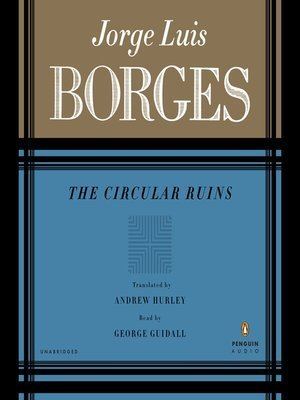8.6 /10 1 Votes
Publication date 1940 Published in english 1949 | 4.3/5 Goodreads Media type Print Originally published 1940 | |||||||||||||||||||||||||||||||||
 | ||||||||||||||||||||||||||||||||||
Original title "Las ruinas circulares" Similar Jorge Luis Borges books, Other books | ||||||||||||||||||||||||||||||||||
The circular ruins by jorge luis borges
"The Circular Ruins" (Spanish: "Las ruinas circulares") is a short story by Argentine author Jorge Luis Borges. First published in the literary journal Sur in December 1940, it was included in the 1941 collection The Garden of Forking Paths (Spanish: El jardín de senderos que se bifurcan) and the 1944 collection Ficciones. It was first published in English in View (Series V, No. 6 1946), translated by Paul Bowles.
Contents
- The circular ruins by jorge luis borges
- The circular ruins jorge luis borges literary roadhouse ep 3
- Epigraph
- Themes
- References
The circular ruins jorge luis borges literary roadhouse ep 3
Epigraph
The story's epigraph is taken from Chapter 4 of Through the Looking-Glass by Lewis Carroll: "And if he left off dreaming about you...". It comes from the passage in which Tweedledee points out the sleeping Red King to Alice, and claims she is simply a character in his dream.
Themes
The short story deals with themes that recur in Borges's work: idealism, the manifestation of thoughts in the "real world", meaningful dreams, and immortality. The manifestation of thoughts as objects in the real world was a theme in "Tlön, Uqbar, Orbis Tertius", but here Borges takes it to another level: the manifestation of human beings rather than simple objects.
The story also seems to symbolize writers as creators who engender one another and whose existence and originality would be impossible without their predecessors, a theme he wrote about in other works such as "Pierre Menard, Author of the Quixote", another short story from the Ficciones collection.
Its treatment of dreaming reality and free will is similar to La vida es sueño, a Spanish play published in 1635 by Pedro Calderón de la Barca.
